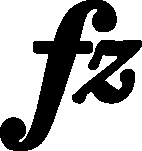



FE1 - First French edition
| Publisher: | Maurice Schlesinger |
| Date: | VI 1833 |
| Title: | Etudes || No. 10 |
| Dedication: | son Ami J. Liszt |
First French edition, based on A. The comparison with the autograph, as well as visible traces of corrections reveal a number of more or less possible changes performed in print. At the same time, some of them were included in GE1 and some not, which indicates the existence of at least two stages of proofreading of FE1 (probably even three – see the Etude in C major, No. 1). Chopin's participation in all proofreadings and their broad range is revealed by the preserved correspondence between Schlesinger and Kistner and their palpable proof is constituted by FEcor (in the Etude in A minor, No. 2). Examples of changes performed in particular stages of proofreading:
- 1. Changes included in GE1 – corrections of original versions mentioned in A, as well as numerous additions of accidentals, also cautionary ones (e.g., in bars 49 and 68), pedalling (in bars 7-8, 15-20, 23-26, 28-32, 39-42, 49, 61-66 and 68-70), as well as fingering in some places;
-
2. Changes not included in GE1 – e.g., adding a
 lowering d2 to d
lowering d2 to d 2 in bar 35, adding a cautionary
2 in bar 35, adding a cautionary  in bar 38, correction of the erroneous f
in bar 38, correction of the erroneous f 4 to f
4 to f 3 in bar 43, g1 to b
3 in bar 43, g1 to b 1 in bar 66.
1 in bar 66.
Apart from the changes and additions illustrated above, which are undoubtedly a result of Chopin's intervention, in FE1 there is a number of differences in relation to A, whose qualification as authentic corrections is uncertain or even dubious. Above all, they concern the omitted performance indications, e.g.:
-
indications of dynamic character, as
 in bars 1, 8, 16 and 75,
in bars 1, 8, 16 and 75,  in bar 16,
in bar 16,  and sotto voce in bar 21, the accent in bars 26 and 38,
and sotto voce in bar 21, the accent in bars 26 and 38,  in bar 37;
in bar 37; -
other indications, as poco rall. and a tempo in bars 28-29,
 marks in bars 4 and 54, fermata in bar 77.
marks in bars 4 and 54, fermata in bar 77.
According to us, the majority of these situations follows from the engraver's haste. It may be even supposed that it was a more or less conscious strategy, as omitting a mark did not increase the workload (even if Chopin wrote the sign later in a proofreading, its addition was not related to any additional effort), engraving an erroneous mark required its burdensome removal. However, in certain fragments, in which next to the aforementioned omissions there are other marks or changes added in a proofreading of FE, one can consider the entire text as controlled and accepted by Chopin. Therefore, we analyse each of this kind of places individually in order to, on the one hand, respect the possible latest intention of Chopin and, on the other hand, not to deny the performer valuable authentic indications, which could have been omitted only by accident.
In spite of a multi-level proofreading, FE1 is also not free from evident errors, e.g., c1 instead of b in bar 38, c
in bar 38, c 2-e
2-e 2 instead of c
2 instead of c 2-e
2-e 2 at the beginning of bar 53.
2 at the beginning of bar 53.
| Original in: | Bibliothèque Nationale de France, Paris |
| Shelf-mark: | Ac.p. 2725 |
